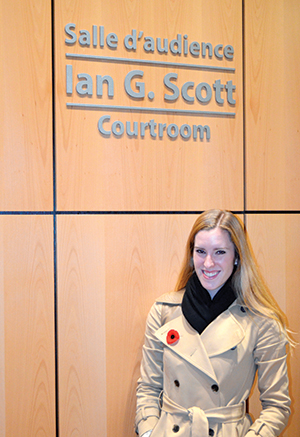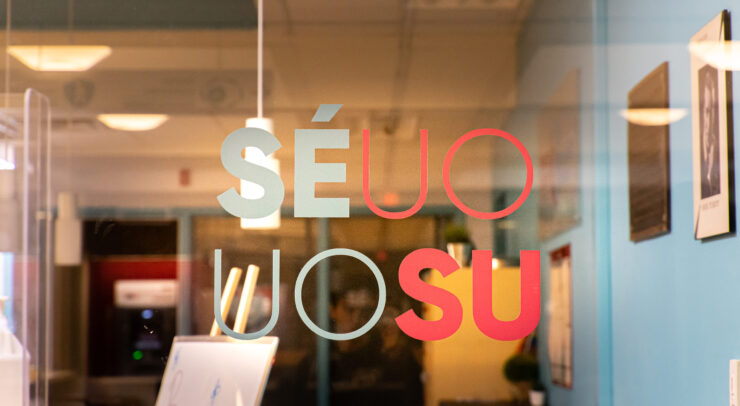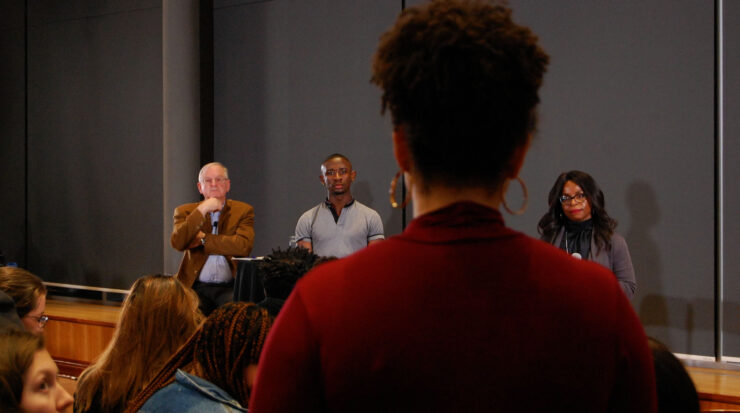Courtroom provides ‘active learning laboratory’ for law students
The University of Ottawa has become the first university in the country to have a fully functioning courtroom on campus. The Ian G. Scott courtroom opened Oct. 23 and will give students the opportunity to watch real world legal proceedings without having to travel off campus.
The fully operational courtroom is set up beside a classroom and is outfitted with one-way soundproof glass, allowing students to watch cases take place. It also allows professors or other lawyers to comment on the proceedings. It is the department’s hope that lawyers and judges involved with the case will come and talk with the class after proceedings are finished. The court will typically not see criminal cases but will instead focus on appeals, application cases, and judicial reviews.
“I call it an active learning laboratory,” said Bruce Feldthusen, current full-time professor and the former dean of common law. “It will be a great facility for students doing mock trials or moot courts, but the unique advantage is that students will be able to observe real lawyers and judges arguing and deciding real civil matters.”
Feldthusen was the dean of common law from January 2000 to June 2013 and along with prominent Ottawa lawyer David Scott, oversaw the project. In 2006, Scott approached Feldthusen about finding a way to commemorate his brother Ian G. Scott who passed away that same year.
“David wanted to do something special in his honour,” Feldthusen said. “He had seen a working courtroom located in a United States law school and thought this would be a good idea in its own right and a wonderful tribute to Ian.”
Ian G. Scott was the former attorney general of Ontario and was a major player in the David Peterson government of the ‘80s. Scott, who received the Order of Canada in 1995, suffered a stroke one year later, reducing his speech significantly yet still preserving his mind. He regained many of his faculties after the stroke but passed away in 2006 at the age of 72.
Feldthusen’s roll as dean was to work with the faculty and administration to get the project rolling, but found the process was “relatively easy.”
“[David] Scott really did the bulk of the work including fundraising, advising the architect, and soliciting support from lawyers and judges,” Feldthusen said.
The cost of the courtroom and classroom was near $700,000, which was mainly raised through the legal community and friends of David Scott.
The new classroom has been well received by law students, including first year French common law student Tatyana Loeffler-Vulpe.
“For students entering into any career there is just nothing better than real world experience to complement what you are learning about in class,” she said. “Having a working courtroom right on campus will give us the opportunity to learn first-hand from lawyers and judges in our community, both by listening to proceedings and by being able to meet with them and ask them questions.”
Loeffler-Vulpe said she feels projects like this show the department’s willingness to “foster a supportive environment for students.”
She also said she hopes future projects will allow students from other disciplines to engage with professionals like the campus courtroom will.






